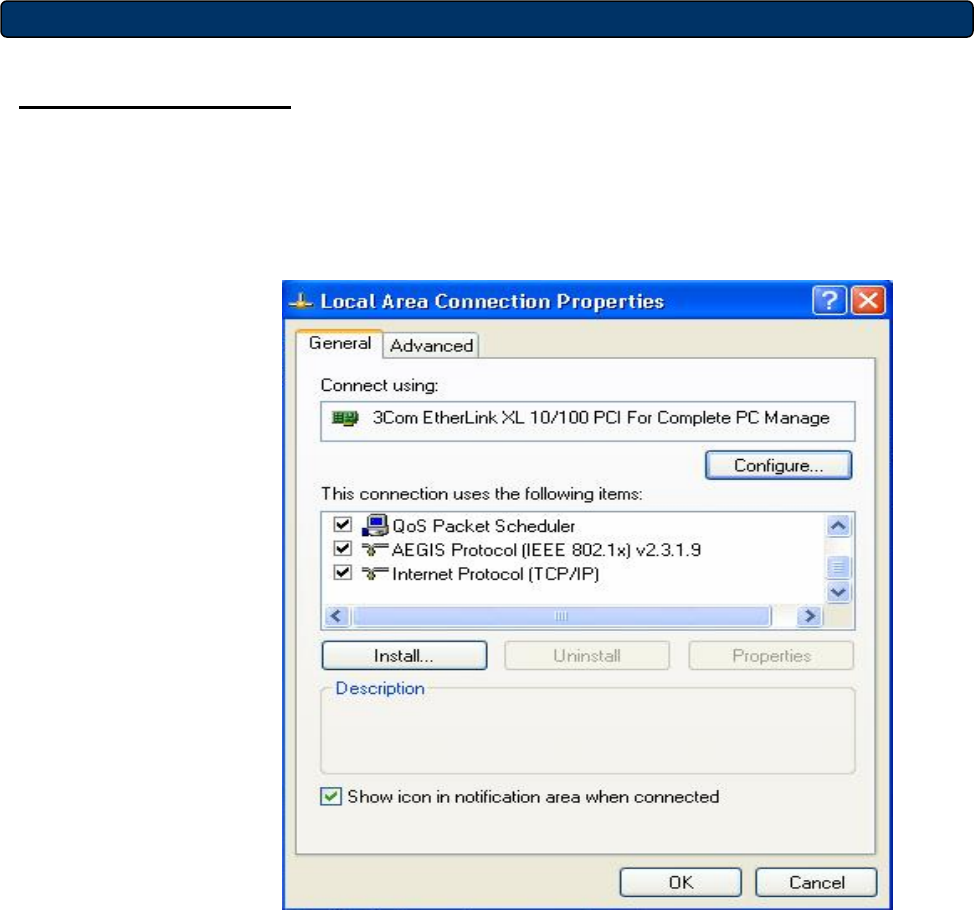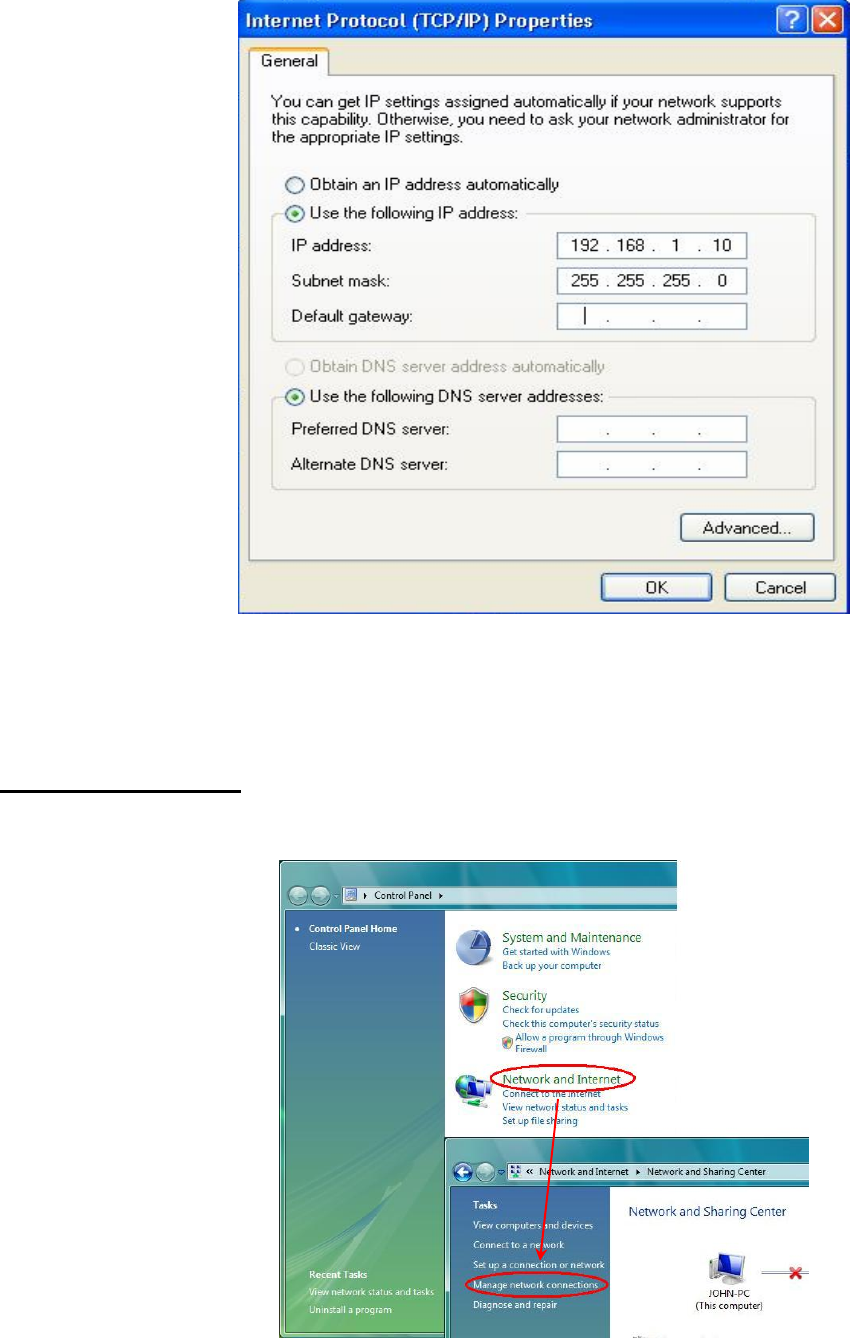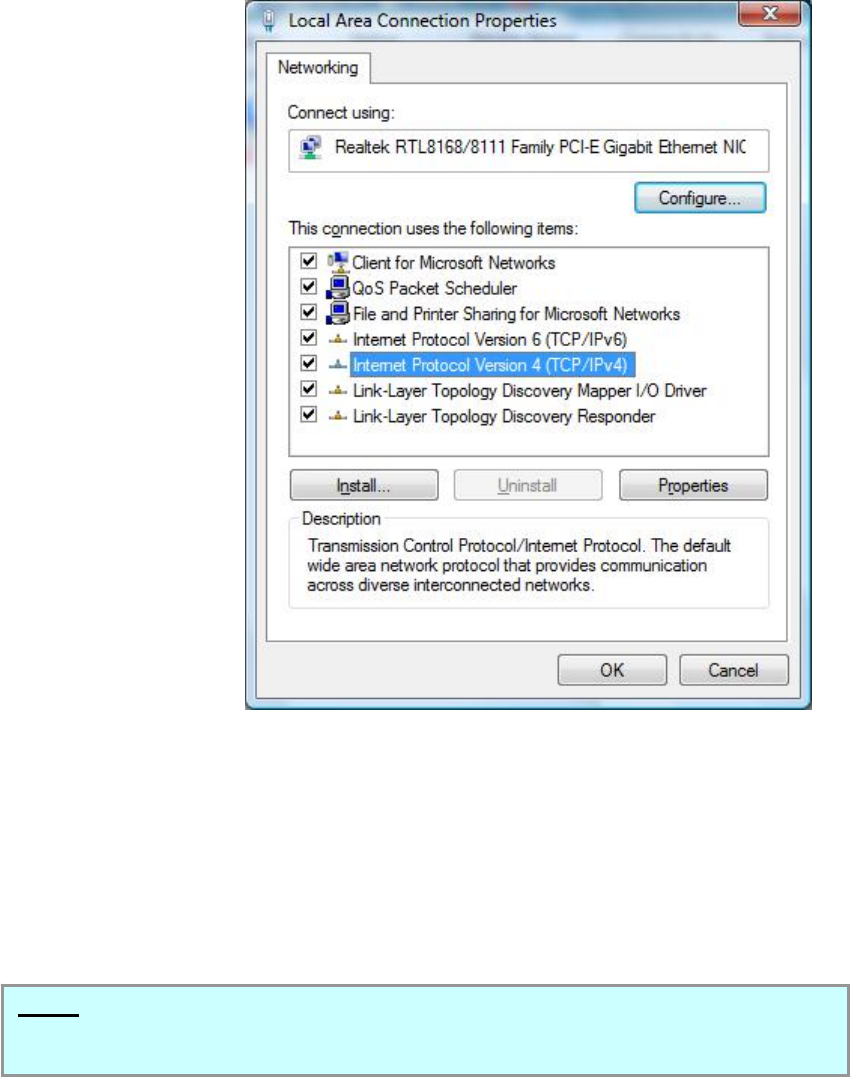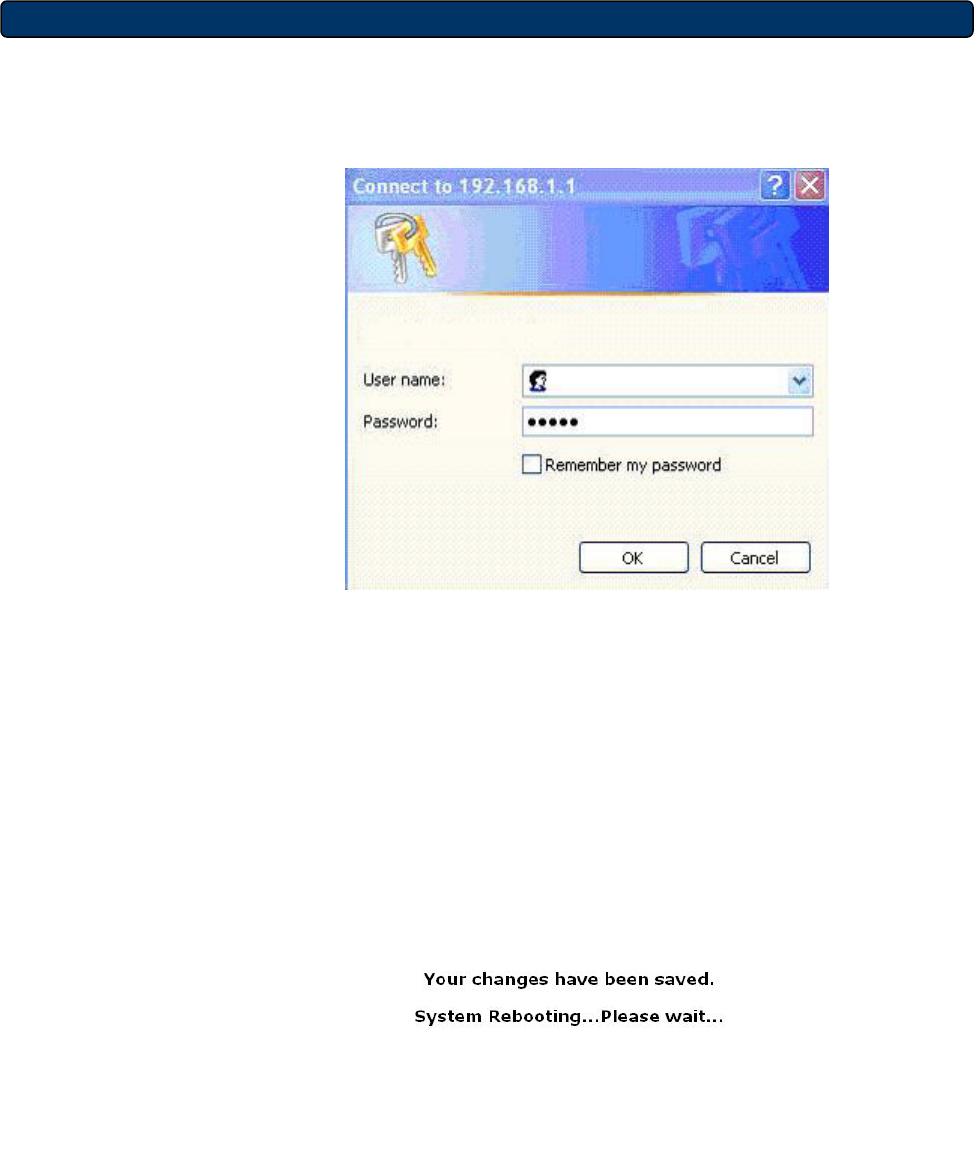SparkLAN Communications WRTR501 Wireless-N Broadband AP/Router User Manual Wireless N Client Adapter
SparkLAN Communications, Inc. Wireless-N Broadband AP/Router Wireless N Client Adapter
Users Manual

Wireless-N Broadband AP / Router
Quick Installation Guide
Version 1.3
Model Name: WRTR-501 for SparkLAN

1
Table of Contents
English
1. Before Installation .............................................................................................................................2
2. Hardware Installation ........................................................................................................................3
3. Configure your computer’s TCP/IP Settings......................................................................................4
4. Configure your AP.............................................................................................................................7

1. Before Installation
Thank you for purchasing the Wireless 11n AP Router. This guide will help you set-up and configure
your AP with easy-to-follow instructions. For more detailed or advanced settings, please refer to the
User Manual on the CD-ROM.
Package Contents
Please make sure you have the following in the box:
♦ WRTR-501 Wireless-N Broadband AP Router
♦ Multi-Language Quick Installation Guide
♦ User Manual CD-ROM
♦ Three dipole 1.75dBi RSMA detachable Antennas
♦ AC/DC Power Adapter
♦ RJ-45 Cat.5 UTP Cable
♦ Warranty Card
Note: if anything is missing, please contact your vendor
2

2. Hardware Installation
1. Power off your network devices.
2. Locate an optimum location for the AP. The best place for the AP is usually at the center of your
wireless network, with line of sight to all of your wireless devices.
3. Adjust the antennas. Normally, higher location of your AP may get better performance.
4. Using a standard Ethernet network cable, connect to the AP’s Ethernet port to your local network.
5. Connect the AC power adapter to the AP's Power port. Then connect the other end to an electrical
outlet. Only use the power adapter supplied with the AP. Use of a different adapter may cause
product damage.
6. The Hardware installation is completed. Please refer to the following content or user guide for AP
configuration.
Verify Hardware LED status
Verify the following LED lights are on:
Power: The Power LED lights up and will keep while the AP is powered on.
Security (orange): WPS encryption is work or not.
Wireless: When wireless is available, this led lights. When transmit or receive the data, this led is
blinking.
Router: When Router is working as "Router", this LED light
DIAG(red): When FW updating or system is abnormal, it will light
Internet: The Internet LED flashes when there is a successful Internet connection.
LAN: The LAN LED lights up when Ethernet port of AP was connected to LAN. When the LED is
flashing it indicates the network activity over that port.
3

3. Configure your computer’s TCP/IP Settings
Windows 2000/XP
1. Click Start; click Settings and then click on the Control Panel.
2. Double-Click the Network Connection icon.
3. Right-Click on the Local Area Connection icon and then click on Properties. The Local Area
Connection Properties windows will appear.
4. Under the General Configuration Tab, locate and select TCP/IP with the corresponding network
card, then click Properties. The Internet Protocol (TCP/IP) Properties window will appear.
5. Click on Use the following IP Address and enter
IP Address: 192.168.1.10
Subnet Mask: 255.255.255.0
Default gateway: 192.168.1.1
4

6. Now your computer is ready to access and configure the AP.
Windows VISTA
1. Click Start Æ Control Panel, then Network and Internet Æ Manage network connections.
2. Right-Click on the Local Area Connection icon and then click on Properties. The Local Area
Connection Properties windows will appear.
5
3. Under the Networking Configuration Tab, locate and select Internet Protocol Version4
(TCP/IPv4) with the corresponding network card, then click Properties. The Internet Protocol
(TCP/IP) Properties window will appear.

4. Click on Use the following IP Address and enter
IP Address: 192.168.1.10
Subnet Mask: 255.255.255.0
Default gateway: 192.168.1.1
5. Now your computer is ready to access and configure the AP.
NOTE : The default IP address setting for the AP is a class C IP address (192.168.1.1 /
255.255.255.0). Please make sure that the current workstation is following the class C IP
address range, from 192.168.1.2 to 192.168.1.254
6

4. Configure your AP
1. Open your web browser, type http://192.168.1.1 in the Address bar, and press Enter.
2. An authentication window will appear. Enter the username and password, and then click OK.
By default, please leave blank in username and type admin in password.
3. Click “Save Settings” button to finish the Setup if you have something change. The following
screen would appear to notify you the system is rebooting. All changes will be taken effect
while reboot procedure is completed.
4. When the AP reboot procedure is completed, you may change the TCP/IP properties of this
computer. Select the “Obtain an IP address automatically” instead of “Use the following IP
Address “ item if your local network has DHCP server service to assign IP address for your
wireless client. This step will set your computer as DHCP client and get IP from your DHCP
server via AP.
If there is no DHCP server in your network, then you should assign one proper IP address
manually to fit your network IP subnet.
7
5. For DHCP client, using following command to check if your computer already got IP address.
8
z Win2000, WinXP, WinVISTA: type the “ ipconfig “ on your windows Command Prompt.
Once you got the IP address, subnet mask and default gateway, that means your computer
already connected to local network.
For detail configuration of this AP, please refer to the CD-ROM.
9
Federal Communication Commission Interference Statement
This equipment has been tested and found to comply with the limits for a Class B digital device,
pursuant to Part 15 of the FCC Rules. These limits are designed to provide reasonable protection
against harmful interference in a residential installation. This equipment generates, uses and can
radiate radio frequency energy and, if not installed and used in accordance with the instructions, may
cause harmful interference to radio communications. However, there is no guarantee that interference
will not occur in a particular installation. If this equipment does cause harmful interference to radio or
television reception, which can be determined by turning the equipment off and on, the user is
encouraged to try to correct the interference by one of the following measures:
- Reorient or relocate the receiving antenna.
- Increase the separation between the equipment and receiver.
- Connect the equipment into an outlet on a circuit different from that to which the receiver is
connected.
- Consult the dealer or an experienced radio/TV technician for help.
This device complies with Part 15 of the FCC Rules. Operation is subject to the following two conditions:
(1) This device may not cause harmful interference, and (2) this device must accept any interference
received, including interference that may cause undesired operation.
FCC Caution: Any changes or modifications not expressly approved by the party responsible for
compliance could void the user's authority to operate this equipment.
IMPORTANT NOTE:
FCC Radiation Exposure Statement:
This equipment complies with FCC radiation exposure limits set forth for an uncontrolled environment.
This equipment should be installed and operated with minimum distance 20cm between the radiator &
your body.
This transmitter must not be co-located or operating in conjunction with any other antenna or
transmitter.
The availability of some specific channels and/or operational frequency bands are country
dependent and are firmware programmed at the factory to match the intended destination. The
firmware setting is not accessible by the end user.
The WRTR-501 ( FCC ID:RYK-WRTR501 ) is limited in CH1~CH11 for 2.4 GHz by specified
firmware controlled in U.S.A.

Europe – EU Declaration of Conformity
This device complies with the essential requirements of the R&TTE Directive 1999/5/EC. The following
test methods have been applied in order to prove presumption of conformity with the essential
requirements of the R&TTE Directive 1999/5/EC:
- EN 60950-1: 2001
Safety of Information Technology Equipment
- EN50385 : (2002-08)
- Product standard to demonstrate the compliance of radio base stations and fixed terminal stations
for wireless telecommunication systems with the basic restrictions or the reference levels related to
human exposure to radio frequency electromagnetic fields (110MHz - 40 GHz) - General public
- EN 300 328 V1.7.1: (2006-10)
- Electromagnetic compatibility and Radio spectrum Matters (ERM); Wideband Transmission
systems; Data transmission equipment operating in the 2,4 GHz ISM band and using spread
spectrum modulation techniques; Harmonized EN covering essential requirements under article 3.2
of the R&TTE Directive
EN 301 489-1 V1.6.1: (2005-09)
Electromagnetic compatibility and Radio Spectrum Matters (ERM); ElectroMagnetic Compatibility
(EMC) standard for radio equipment and services; Part 1: Common technical requirements
- EN 301 489-17 V1.2.1 (2002-08)
- Electromagnetic compatibility and Radio spectrum Matters (ERM); ElectroMagnetic Compatibility
(EMC) standard for radio equipment and services; Part 17: Specific conditions for 2,4 GHz
wideband transmission systems and 5 GHz high performance RLAN equipment
This device is a 2.4 GHz wideband transmission system (transceiver), intended for use in all EU
member states and EFTA countries, except in France and Italy where restrictive use applies.
In Italy the end-user should apply for a license at the national spectrum authorities in order to obtain
authorization to use the device for setting up outdoor radio links and/or for supplying public access to
telecommunications and/or network services.
This device may not be used for setting up outdoor radio links in France and in some areas the RF
output power may be limited to 10 mW EIRP in the frequency range of 2454 – 2483.5 MHz. For detailed
information the end-user should contact the national spectrum authority in France.
10

Česky
[Czech]
[Jméno výrobce] tímto prohlašuje, že tento [typ zařízení] je ve shodě se
základními požadavky a dalšími příslušnými ustanoveními směrnice 1999/5/ES.
Dansk
[Danish]
Undertegnede [fabrikantens navn] erklærer herved, at følgende udstyr [udstyrets
typebetegnelse] overholder de væsentlige krav og øvrige relevante krav i direktiv
1999/5/EF.
Deutsch
[German]
Hiermit erklärt [Name des Herstellers], dass sich das Gerät [Gerätetyp] in
Übereinstimmung mit den grundlegenden Anforderungen und den übrigen
einschlägigen Bestimmungen der Richtlinie 1999/5/EG befindet.
Eesti
[Estonian]
Käesolevaga kinnitab [tootja nimi = name of manufacturer] seadme [seadme
tüüp = type of equipment] vastavust direktiivi 1999/5/EÜ põhinõuetele ja
nimetatud direktiivist tulenevatele teistele asjakohastele sätetele.
English Hereby, [name of manufacturer], declares that this [type of equipment] is in
compliance with the essential requirements and other relevant provisions of
Directive 1999/5/EC.
Español
[Spanish]
Por medio de la presente [nombre del fabricante] declara que el [clase de
equipo] cumple con los requisitos esenciales y cualesquiera otras disposiciones
aplicables o exigibles de la Directiva 1999/5/CE.
Ελληνική
[Greek]
ΜΕ ΤΗΝ ΠΑΡΟΥΣΑ [name of manufacturer] ΔΗΛΩΝΕΙ ΟΤΙ [type of equipment]
ΣΥΜΜΟΡΦΩΝΕΤΑΙ ΠΡΟΣ ΤΙΣ ΟΥΣΙΩΔΕΙΣ ΑΠΑΙΤΗΣΕΙΣ ΚΑΙ ΤΙΣ ΛΟΙΠΕΣ
ΣΧΕΤΙΚΕΣ ΔΙΑΤΑΞΕΙΣ ΤΗΣ ΟΔΗΓΙΑΣ 1999/5/ΕΚ.
Français
[French]
Par la présente [nom du fabricant] déclare que l'appareil [type d'appareil] est
conforme aux exigences essentielles et aux autres dispositions pertinentes de la
directive 1999/5/CE.
Italiano
[Italian]
Con la presente [nome del costruttore] dichiara che questo [tipo di apparecchio]
è conforme ai requisiti essenziali ed alle altre disposizioni pertinenti stabilite dalla
direttiva 1999/5/CE.
Latviski
[Latvian]
Ar šo [name of manufacturer / izgatavotāja nosaukums] deklarē, ka [type of
equipment / iekārtas tips] atbilst Direktīvas 1999/5/EK būtiskajām prasībām un
citiem ar to saistītajiem noteikumiem.
Lietuvių
[Lithuanian]
Šiuo [manufacturer name] deklaruoja, kad šis [equipment type] atitinka esminius
reikalavimus ir kitas 1999/5/EB Direktyvos nuostatas.
Nederlands
[Dutch]
Hierbij verklaart [naam van de fabrikant] dat het toestel [type van toestel] in
overeenstemming is met de essentiële eisen en de andere relevante bepalingen
van richtlijn 1999/5/EG.
Malti
[Maltese]
Hawnhekk, [isem tal-manifattur], jiddikjara li dan [il-mudel tal-prodott] jikkonforma
mal-ħtiġijiet essenzjali u ma provvedimenti oħrajn relevanti li hemm fid-Dirrettiva
1999/5/EC.
Magyar
[Hungarian]
Alulírott, [gyártó neve] nyilatkozom, hogy a [... típus] megfelel a vonatkozó
alapvetõ követelményeknek és az 1999/5/EC irányelv egyéb elõírásainak.
Polski Niniejszym [nazwa producenta] oświadcza, że [nazwa wyrobu] jest zgodny z
11

[Polish] zasadniczymi wymogami oraz pozostałymi stosownymi postanowieniami
Dyrektywy 1999/5/EC.
Português
[Portuguese
]
[Nome do fabricante] declara que este [tipo de equipamento] está conforme com
os requisitos essenciais e outras disposições da Directiva 1999/5/CE.
Slovensko
[Slovenian]
[Ime proizvajalca] izjavlja, da je ta [tip opreme] v skladu z bistvenimi zahtevami in
ostalimi relevantnimi določili direktive 1999/5/ES.
Slovensky
[Slovak]
[Meno výrobcu] týmto vyhlasuje, že [typ zariadenia] spĺňa základné požiadavky a
všetky príslušné ustanovenia Smernice 1999/5/ES.
Suomi
[Finnish]
[Valmistaja = manufacturer] vakuuttaa täten että [type of equipment = laitteen
tyyppimerkintä] tyyppinen laite on direktiivin 1999/5/EY oleellisten vaatimusten ja
sitä koskevien direktiivin muiden ehtojen mukainen.
Svenska
[Swedish]
Härmed intygar [företag] att denna [utrustningstyp] står I överensstämmelse med
de väsentliga egenskapskrav och övriga relevanta bestämmelser som framgår
av direktiv 1999/5/EG.
12